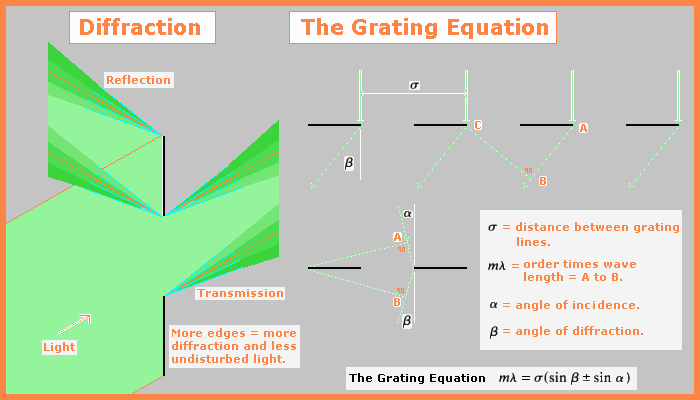

In the case of a reflection grating the formula is: wave length = distance between grooves ( sin beta + sin alpha ).
As the reflecting groove in a grating is made smaller the light is diffracted wider. Of course the total light is less with a very narrow grove.
The grooves in the grating can be cut at various 'blaze' angles by the diamond cutter on the grating engine. With the grooves cut at a particular angle the collimated light must be set at a particular angle for maximum efficiency at a particular wave length. There is a formula for this best angle of incidence.
As an experiment set your telescope on a bright star and observe the size of the star image. Then place a window screen over the top of the scope and observe the increased size of the star image and the many diffraction spectra.